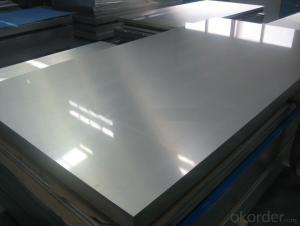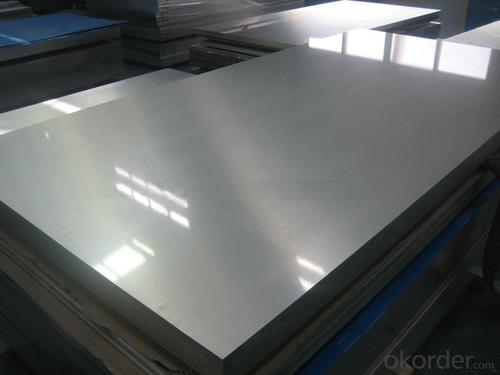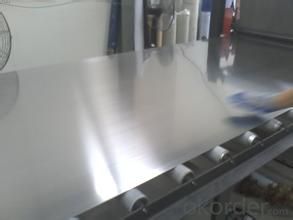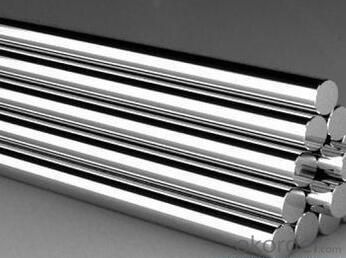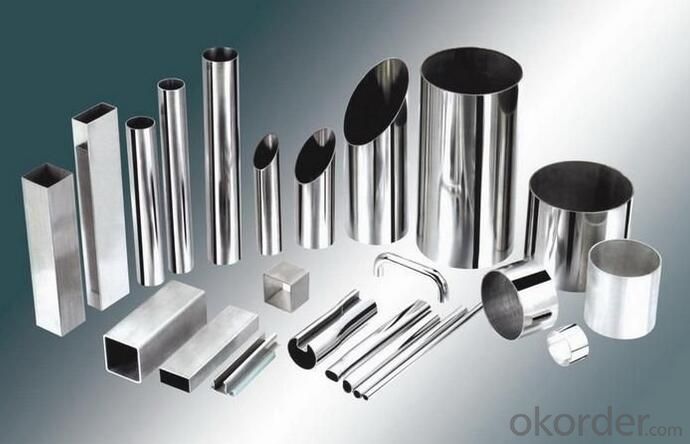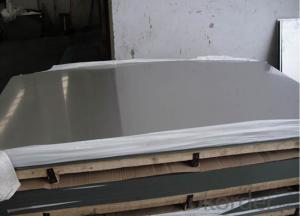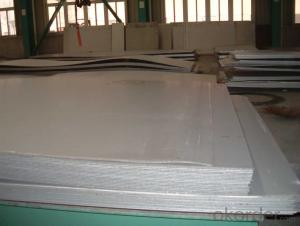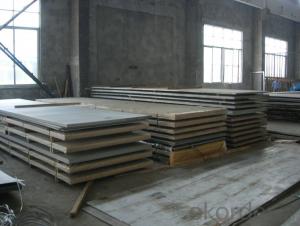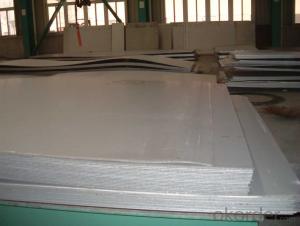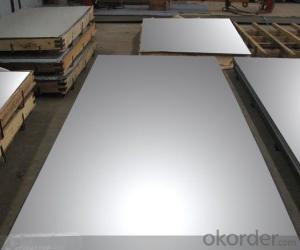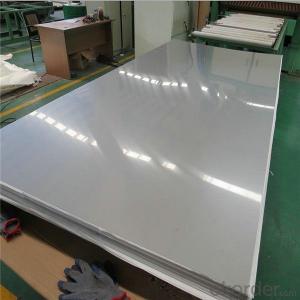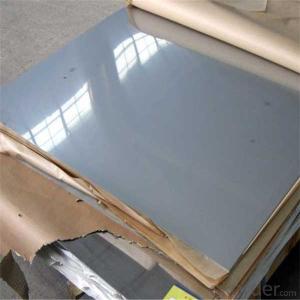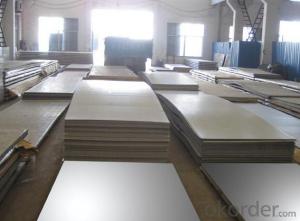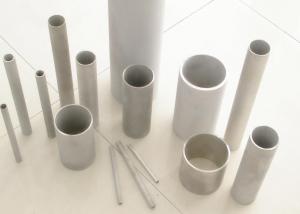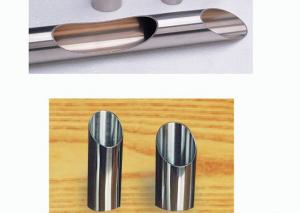430 201 202 304 304l 316 316l 321 310s 309s 904l Stainless Steel Sheet
- Loading Port:
- Shanghai
- Payment Terms:
- TT OR LC
- Min Order Qty:
- 1 m.t.
- Supply Capability:
- 20000 m.t./month
OKorder Service Pledge
OKorder Financial Service
You Might Also Like
Specification
430 201 202 304 304l 316 316l 321 310s 309s 904l Stainless Steel Sheet
Packaging Details:Wooden pallets,water proof paper-20'GP or 40'GP for stainless steel sheet.
Delivery Detail:within 5-7 days after receiving the deposit
1. Specifications about stainless steel sheet
Commodity | Professional 430 201 202 304 304l 316 316l 321 310s 309s 904l stainless steel sheet |
Grade | 201,202,304,304L,316,316L,310S,309S,321,301,310,410,420,430,904L |
Brand | TISCO ,BAOSTEEL,POSCO,JISCO,LISCO |
Certification | SGS,BV,IQI,TUV,ISO,etc |
Thickness | 0.2mm-150mm |
Width | 1000,1219,1250,1500mm, or as your requirements |
Length | 2000,2438,2500,3000,6000mm, or as your requirements |
Surface | No.1, 2B, BA, 8K Mirror, Hairline,satin, Embossed,brush,No.4,HL,matt,pvc film,laser film. |
Standard | ASTM,AISI,SUS,JIS,EN,DIN,GB, ASME,etc |
Delivery time | 5-7 days after confirming the order |
MOQ | 1 Ton |
Advantages | Showing the splendor of your quality, wearresistant as well , strong corrosion resistance and decorative effect, durable and beautiful in good taste. |
2.Production Flow about stainless steel sheet
Raw materials are sending to hot rolling units for rolling into different sizes
Hot rolled material is annealing in cold; rolled annealing furnace and pickling in acid.
All mill rolls are grinded on precision grinding machine with proper chamfering after first shiftoperation.
All sheets are pickled in different tanks and dried on brush roll machine before dispatched.
These sheets are again annealing and are sent to straighten machine for straightening.
Inspections are done at various stages. Keep proper control overall internal process via rolling,annealin and pickling by our experienced staff.
3.Surface--stainless steel sheet
| Surface Finish | Definition | Application |
| 2B | Those finished, after cold rolling, by heat treatment, pickling or other equivalent treatment and lastly by cold rolling to given appropriate luster. | Medical equipment, Food industry, Construction material, Kitchen utensils. |
BA/8K mirror | Those processed with bright heat treatment after cold rolling. | Kitchen utensils, Electric equipment, Building construction. |
| NO.3 | Those finished by polishing with No.100 to No.120 abrasives specified in JIS R6001. | Kitchen utensils, Building construction. |
| NO.4 | Those finished by polishing with No.150 to No.180 abrasives specified in JIS R6001. | Kitchen utensils, Building construction, Medical equipment. |
| Hairline | Those finished polishing so as to give continuous polishing streaks by using abrasive of suitable grain size. | Building Construction. |
| NO.1 | The surface finished by heat treatment and pickling or processes corresponding there to after hot rolling. | Chemical tank, pipe. |
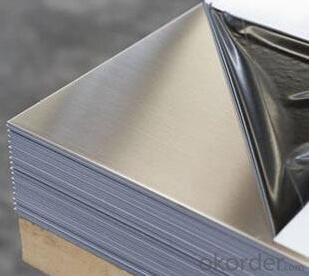
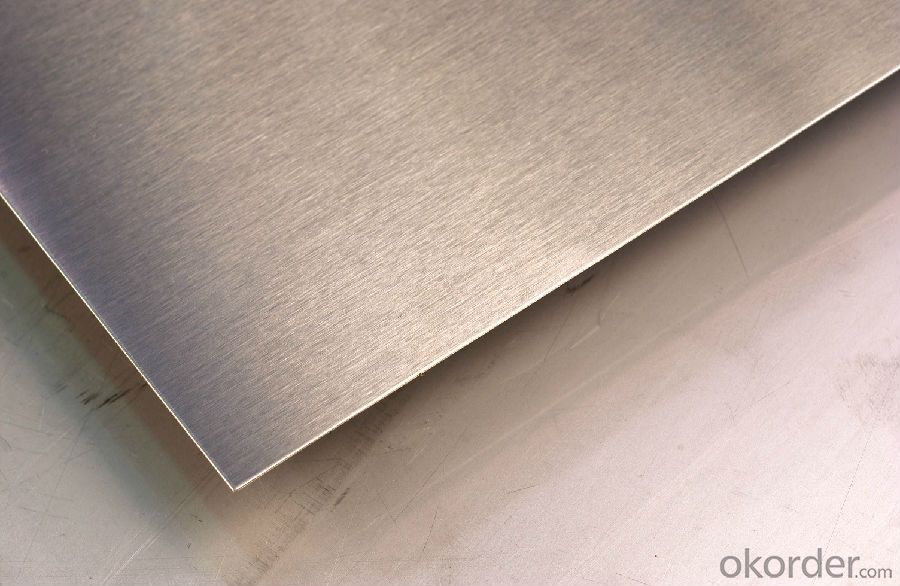
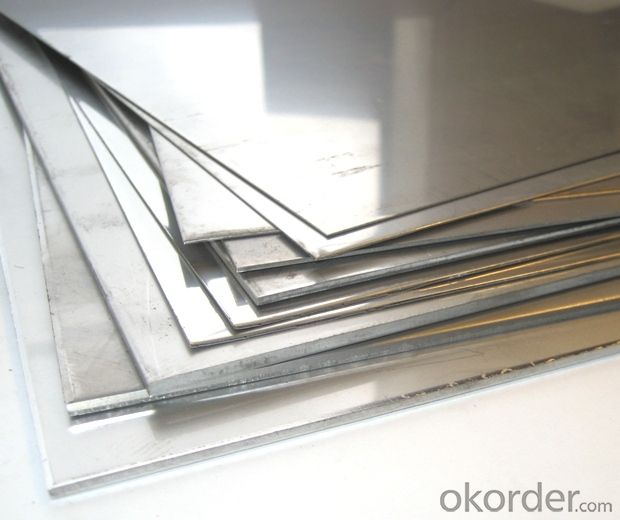
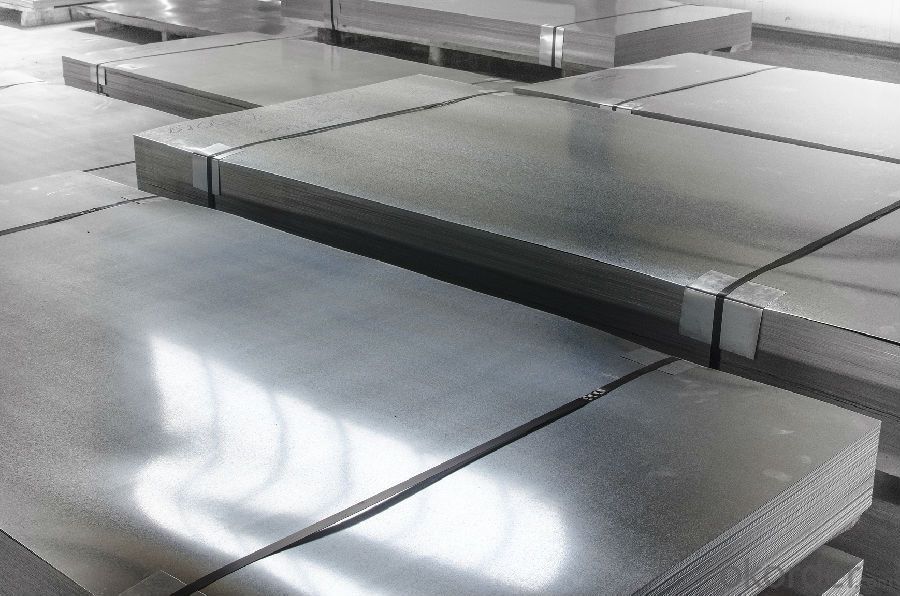
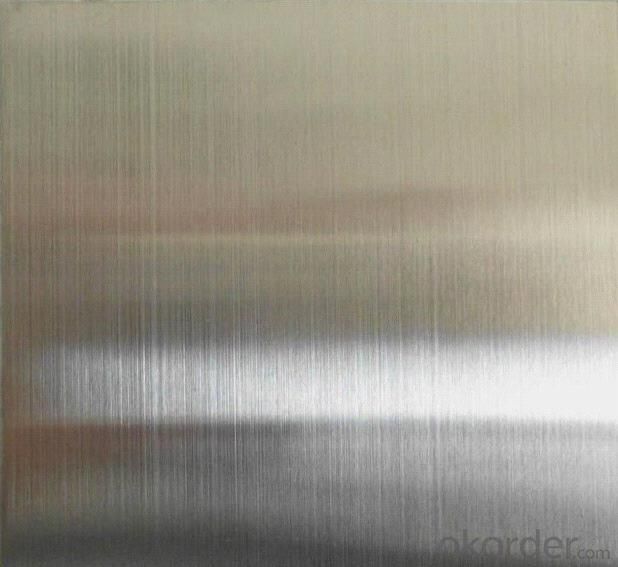
- Q: How do you measure the thickness of stainless steel sheets?
- To measure the thickness of stainless steel sheets, you can use a variety of methods. One of the most common methods is to use a caliper, which is a precision measuring tool. With a caliper, you can directly measure the thickness by placing the jaws on both sides of the sheet and tightening them until they make contact. The reading on the caliper will indicate the thickness of the stainless steel sheet. Another method is to use a micrometer, which is similar to a caliper but more accurate for measuring very thin sheets. A micrometer can provide precise measurements by using a spindle and anvil to measure the thickness. It is commonly used in manufacturing and engineering industries where accuracy is crucial. If you don't have access to a caliper or micrometer, you can also use a simple ruler or tape measure. While this method may not be as accurate as using specialized tools, it can still provide a rough estimate of the thickness. By measuring the height of the sheet, you can determine its thickness assuming it is uniform throughout. It is important to note that depending on the thickness of the stainless steel sheet, different measurement tools may be more suitable. Thinner sheets are best measured using micrometers or calipers, while thicker sheets may require more specialized tools such as ultrasonic thickness gauges. In summary, the thickness of stainless steel sheets can be measured using various methods including calipers, micrometers, rulers, or tape measures. The choice of tool depends on the accuracy required and the thickness of the sheet being measured.
- Q: How do you prevent galvanic corrosion on stainless steel sheets?
- There are several ways to prevent galvanic corrosion on stainless steel sheets: 1. Compatibility of materials: Make sure that any other metals or materials that come into contact with the stainless steel sheets are also resistant to corrosion. Avoid coupling stainless steel with dissimilar metals, especially those with a higher electrochemical potential difference, as this can speed up galvanic corrosion. 2. Insulation and isolation: Create a physical barrier or layer of insulation between the stainless steel sheets and any dissimilar metals. This can be achieved by using gaskets, seals, or non-conductive coatings. By preventing direct contact between the stainless steel and other metals, the risk of galvanic corrosion is reduced. 3. Proper installation: During installation, ensure that the stainless steel sheets are properly grounded and separated from other metals. This helps to minimize the potential for galvanic corrosion by reducing the flow of electrical currents between dissimilar metals. 4. Regular maintenance: Regularly inspect and clean the stainless steel sheets to remove any contaminants or foreign materials that could contribute to galvanic corrosion. This includes removing any rust, scale, or deposits that may have formed on the surface. 5. Cathodic protection: Consider implementing a cathodic protection system, such as sacrificial anodes or impressed current systems, to provide an extra layer of protection against galvanic corrosion. These systems work by introducing a sacrificial metal that corrodes instead of the stainless steel, effectively preventing corrosion of the stainless steel sheets. By implementing these preventive measures, it is possible to significantly reduce the risk of galvanic corrosion on stainless steel sheets and extend their lifespan.
- Q: Can stainless steel sheets be used for architectural column covers?
- Yes, stainless steel sheets can be effectively used for architectural column covers due to their durability, strength, and aesthetic appeal. Stainless steel offers excellent corrosion resistance and can withstand various weather conditions, making it a suitable material for outdoor applications. Additionally, stainless steel sheets can be customized to achieve different finishes and designs, providing architects and designers with flexibility in creating visually appealing column covers.
- Q: What are the different types of stainless steel sheet finishes available?
- There are several different types of stainless steel sheet finishes available, each with its own unique characteristics and applications. Some of the most common finishes include: 1. No. 1 Finish: This is the most basic type of stainless steel sheet finish, also known as hot rolled or annealed and pickled finish. It has a rough, dull appearance with a non-reflective surface. It is commonly used in industrial applications where aesthetics are not a primary concern. 2. No. 2B Finish: This is a smooth, semi-reflective finish that is achieved by cold rolling, annealing, and pickling. It has a slightly glossy appearance and is commonly used for applications where a moderate level of corrosion resistance is required. 3. No. 4 Finish: This finish is achieved by polishing the stainless steel sheet with a fine abrasive material. It has a brushed appearance with a low gloss finish. It is often used in architectural and decorative applications, such as kitchen appliances, countertops, and elevator panels. 4. No. 8 Finish: Also known as a mirror finish, this is the most reflective stainless steel sheet finish available. It is achieved by polishing the surface with progressively finer grits until a mirror-like finish is achieved. It is commonly used in decorative applications, such as architectural accents, signage, and ornamental pieces. 5. Satin Finish: This finish has a smooth, satin-like appearance with a low to medium gloss level. It is achieved by using a combination of brushing and polishing techniques. It is often used in applications where a balance between aesthetics and functionality is desired, such as kitchen equipment, sanitary appliances, and automotive trim. 6. Bead Blasted Finish: This finish is achieved by blasting the surface of the stainless steel sheet with glass beads at high pressure. It creates a uniform, matte appearance with a subtle texture. It is commonly used in architectural and interior design applications, such as wall panels, elevator doors, and furniture. 7. Embossed Finish: This finish is achieved by imprinting a pattern onto the surface of the stainless steel sheet using a mechanical process. It creates a textured appearance that can range from subtle to dramatic, depending on the pattern. It is often used in decorative applications, such as wall cladding, signage, and decorative panels. These are just a few examples of the different types of stainless steel sheet finishes available. The choice of finish depends on the specific requirements of the application, including aesthetics, corrosion resistance, and functionality.
- Q: How do you join stainless steel sheets together?
- Different methods can be employed to connect stainless steel sheets, depending on the desired outcome and specific application. Here, we present a few commonly used techniques: 1. Welding: Stainless steel sheets can be welded using various methods like TIG (Tungsten Inert Gas), MIG (Metal Inert Gas), or spot welding. Through welding, a strong and enduring bond is formed between the sheets, ensuring a secure connection. 2. Mechanical Fastening: By utilizing mechanical fasteners such as screws, bolts, or rivets, stainless steel sheets can be effectively joined. This approach is commonly employed when disassembly or reassembly is necessary, as it allows for easy removal and reinstallation. 3. Adhesive Bonding: Specialized adhesives specifically designed for stainless steel can be utilized to connect sheets together. These adhesives create a robust bond while preserving the aesthetics of the stainless steel surface. However, adhesive bonding may not be suitable for applications involving high stress or temperature. 4. Clinching: The clinching method involves applying a special tool to press the stainless steel sheets together, resulting in a mechanical interlock. This technique is frequently used for joining thin sheets and offers a cost-effective and expeditious solution. When selecting the most suitable method, it is crucial to consider the project's specific requirements, including load-bearing capacity, temperature, corrosion resistance, and aesthetics. Seeking guidance from a professional or conducting thorough research can assist in ensuring that the chosen joining technique is appropriate for the intended application.
- Q: Can stainless steel sheets be used for elevator ceilings or floors?
- Yes, stainless steel sheets can be used for elevator ceilings or floors. Stainless steel is a durable and resistant material, making it suitable for areas that require frequent cleaning and maintenance, such as elevator interiors. Additionally, stainless steel offers an aesthetically pleasing and modern look, enhancing the overall appearance of elevator ceilings and floors.
- Q: Are stainless steel sheets resistant to caustic soda?
- Yes, stainless steel sheets are generally resistant to caustic soda. Caustic soda, also known as sodium hydroxide, is a highly corrosive substance, but stainless steel is known for its excellent corrosion resistance. Stainless steel contains chromium, which forms a protective oxide layer on the surface of the metal, preventing it from reacting with caustic soda. However, it is important to note that the exact resistance of stainless steel to caustic soda may vary depending on the grade or type of stainless steel. Therefore, it is always recommended to consult the specific material specifications or consult with a qualified professional to ensure the appropriate choice of stainless steel for specific applications involving caustic soda.
- Q: Can stainless steel sheets be used for water tanks or storage containers?
- Yes, stainless steel sheets can certainly be used for water tanks or storage containers. Stainless steel is a popular choice for these applications due to its excellent corrosion resistance and durability. It does not rust or corrode easily, making it ideal for storing water or other liquids. Stainless steel is also hygienic and easy to clean, which is important for maintaining the purity of stored water or food products. Additionally, stainless steel sheets can be easily fabricated into various shapes and sizes to suit the specific requirements of the water tank or storage container. Overall, stainless steel sheets are a reliable and long-lasting option for water tanks or storage containers.
- Q: Are stainless steel sheets suitable for architectural mesh applications?
- Yes, stainless steel sheets are highly suitable for architectural mesh applications. Stainless steel is a versatile and durable material that offers numerous benefits for architectural applications. It is resistant to corrosion, which is crucial for long-term performance in outdoor and high-moisture environments. Additionally, stainless steel has excellent strength and can withstand heavy loads, making it ideal for structural applications. Architectural mesh made from stainless steel sheets offers a unique combination of functionality and aesthetics. It can be used for a wide range of applications, including facades, cladding, sunshades, balustrades, and partitions. The mesh can be woven or welded into various patterns and shapes, allowing for creative and visually appealing designs. Stainless steel architectural mesh also provides excellent transparency and airflow, making it suitable for applications that require ventilation or light transmission. It can enhance the aesthetics of a building by creating a sense of openness while providing privacy and security. Moreover, stainless steel offers a high degree of customization. It can be finished in different colors and surface textures, allowing architects and designers to achieve their desired look and feel. Additionally, stainless steel is a sustainable material as it is fully recyclable and has a long lifespan, reducing the environmental impact of architectural projects. In conclusion, stainless steel sheets are highly suitable for architectural mesh applications due to their corrosion resistance, strength, versatility, and aesthetic appeal. They provide architects and designers with a wide range of options to create visually striking and functional structures.
- Q: Can stainless steel sheets be polished?
- Stainless steel sheets, indeed, possess the ability to undergo polishing. The act of polishing these sheets serves the purpose of enhancing their visual appeal, resulting in the creation of a sleek and lustrous surface. This procedure typically entails the utilization of abrasive substances like sandpaper, polishing compounds, or specialized machinery in order to eliminate any flaws or marks present on the stainless steel sheet's surface. This task can be accomplished both manually or with the assistance of specific equipment. By polishing stainless steel sheets, not only does their aesthetic allure become enhanced, but their susceptibility to corrosion and staining is also significantly reduced.
Send your message to us
430 201 202 304 304l 316 316l 321 310s 309s 904l Stainless Steel Sheet
- Loading Port:
- Shanghai
- Payment Terms:
- TT OR LC
- Min Order Qty:
- 1 m.t.
- Supply Capability:
- 20000 m.t./month
OKorder Service Pledge
OKorder Financial Service
Similar products
Hot products
Hot Searches
Related keywords
